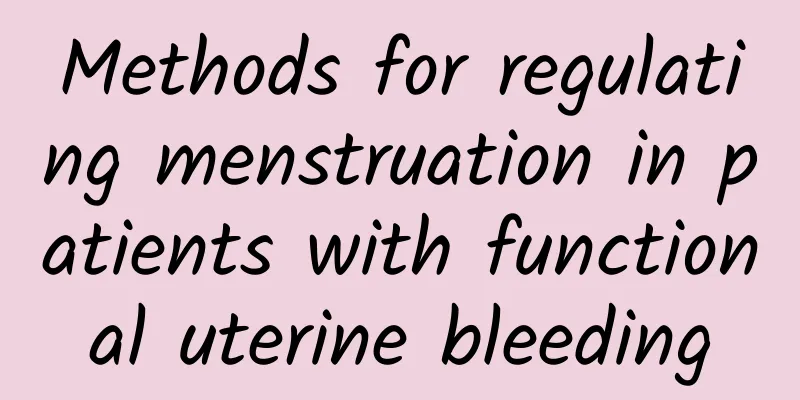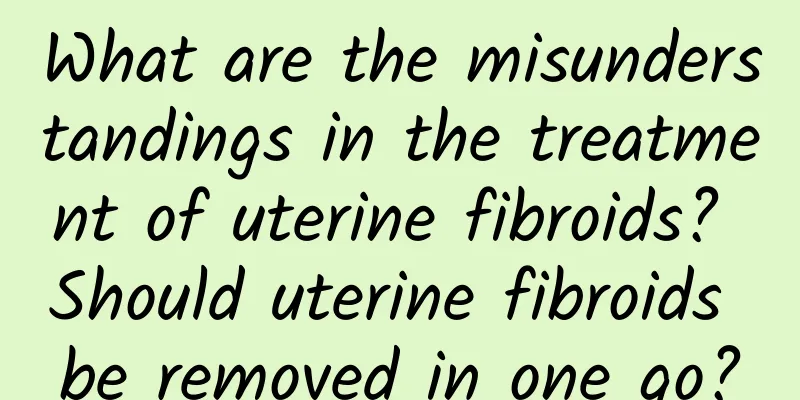Methods for regulating menstruation in patients with functional uterine bleeding

|
The cycle regulation of patients with functional uterine bleeding is based on hemostasis treatment, simulating the rhythm of reproductive hormones, and using artificial cycle therapy with estrogen-progesterone to promote the cyclical development and shedding of the endometrium and improve the feedback function of the HPO axis. Rebound ovulation and restoration of regular menstruation may occur after drug discontinuation. Full cycle therapy 1. Estrogen-progesterone sequential therapy: Applicable to adolescent functional uterine bleeding. Take diethylstilbestrol 0.5-1.0 mg/d x 20-22 days starting from the fifth day of the menstrual cycle. Take 8-10 mg/d of medroxyprogesterone for the next 10 days, or inject progesterone 20 mg/d for the next 5 days. Three cycles constitute one course of treatment. 2. Estrogen-progestin combined therapy: Suitable for women of childbearing age and menopausal women with functional uterine bleeding, excessive endometrial hyperplasia, and menorrhagia. Oral contraceptive pills No. Ⅰ or No. Ⅱ are taken orally from the fifth day of the menstrual cycle, 1 tablet/dX22 days, for a total of 3 cycles. (Metronidazole 4mg + diethylstilbestrol 0.5mg)/d, or (norethindrone 2.5mg + diethylstilbestrol 0.5mg)/dX20-22 days, for a total of 3 cycles. 3. Progestin therapy: norethindrone 2.5-5.0 mg/d; or megestrol acetate, medroxyprogesterone acetate 4-8 mg/d; or chlormadinone acetate 12 mg/dX20-22 days. 3 cycles in total. 4. Progestogen-androgen therapy: On the basis of progestogen therapy, 5-10 mg of methyltestosterone is added orally every day to enhance the inhibitory effect on the HPOU axis. Second half cycle therapy It is limited to regulating the cycle, assisting the corpus luteum, and controlling bleeding by taking estrogen-progesterone orally or intramuscularly every day from the 15th to the 24th day of the menstrual cycle (the second half of the cycle) for a total of 10 days. The drugs include: oral contraceptives No. Ⅰ or No. Ⅱ tablets (full or half tablets)/d; norethindrone 2.5-5.0 mg, or (megestrol acetate, medroxyprogesterone acetate 6-8 mg + diethylstilbestrol 0.25-0.5 mg)/d; compound progesterone 1 vial/dX5-7 days. |
<<: What causes uterine fibroids?
>>: How do you know if you have an ovarian cyst?
Recommend
What are the causes of adenomyosis?
As a common gynecological disease, although adeno...
Can female cervical erosion be cured? Here are two methods to treat cervical erosion
Cervical erosion is a type of chronic cervicitis....
Let your brain go off work! 3 Weight Loss Foods to Help You Sleep
"You can lose weight while sleeping" is...
3CMX2CM Is pelvic effusion serious?
Pelvic effusion of three centimeters by two centi...
The key to winning a marathon: Swing your hands like this to run faster!
"Ah, running is just about running, who can&...
What are the symptoms of miscarriage just after implantation? What is the clinical course of late miscarriage?
What are the symptoms of miscarriage just after i...
Contraceptive pills and abortion: Which is more harmful to the body?
When discussing the harm of birth control pills a...
Doctors teach you how to eat in the first week of weight loss. Just do it right once and you will be successful forever.
The first week of weight loss is usually the hard...
Eating the wrong tonic food can cause menstrual pain, constipation, and high blood pressure! Nutritionist: Drink wolfberry, longan and ginger tea to avoid cold hands and feet
It’s freezing cold in winter, and nourishing food...
Can hugging help you lose weight and fight aging? 8 benefits of holding your own
Hugs can warm up people's feelings, but they ...
Which hospital should I go to for treatment of pelvic peritonitis?
Pelvic peritonitis is extremely harmful to female...
How to correctly choose the treatment time for cervical erosion?
How to correctly choose the treatment time for ce...
What can I eat to eliminate uterine fibroids? What can I eat to eliminate uterine fibroids?
What can I eat to eliminate uterine fibroids? Wha...
You must know the six reasons why leucorrhea is yellow!
Female secretions, also known as leucorrhea, are ...
Can endometritis and pelvic inflammatory disease be detected by B-ultrasound?
B-ultrasound can assist in the diagnosis of endom...









